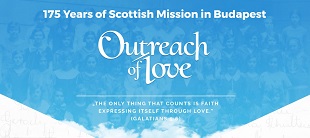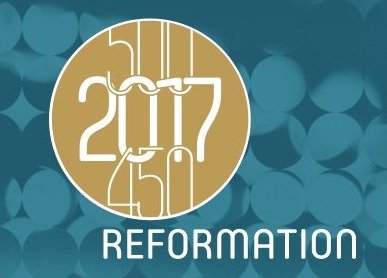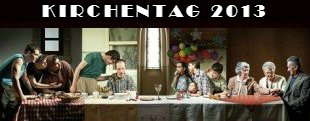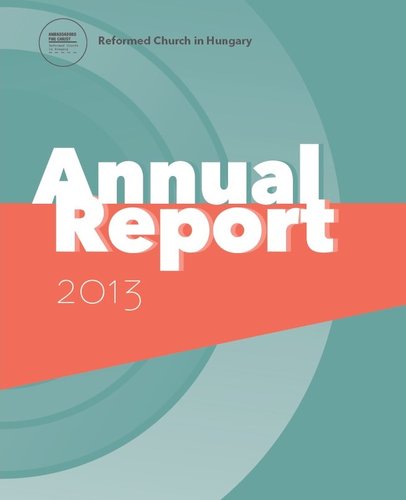To Arrive into the Presence
2019. november 18., hétfőSince 2007, every year on the third week of September, the Ars Sacra Festival is organized, providing space in different forms of art for the sacred. In connection with this program, an exhibition was opened in September called Fragmentum – contemporary sacred photography that examines the fragmentation of human recognition and remembrance. One of the twenty exhibitors is the photographer and poet Gyöngyi Hegedűs, with whom we were speaking about art, faith, flow and „scandalousness”.
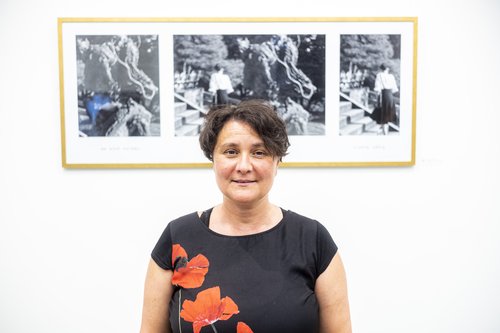
Interviewer: Photographer, poet, doctor, wife, mother and a believer – how is it possible to cope and balance with so many roles?
Hegedűs: Maybe because one thing feeds the other. The medical profession – if you really do it wholeheartedly – can take out loads of energy. Many times the communication needs to be simple in order to make it understandable for the patient. It is good that in art I don’t need to be concerned about how the people will understand it. It can seem selfish, but when I make a photo or write something, then I do not consider whether others would understand it or not.
I: Not at all?
H: No. My aim is, that there is something deep in me, that I can express this way. The interesting thing is, that there is always somebody who is surprised at this depth, but there are some who are not affected at all. Endre Mányoki, who helped me in the beginning by publishing my poems, used to say, that there is also a risk by the recipient: you can be in a phase, when it’s better for you to avoid this deepness because you may not bear it. Besides, we all come from different experiences: even the most everyday sentence cannot mean the same for one person and the other.
I: But the conversation can also be risky.
H: It is a philosophical problem, that we do not understand the same meaning when we hear the same words. It is especially true for the visual ventilation that I’m doing at the Új Forrás (New Well-Spring) literary journal. It is a continuous writing: there are no punctuations, so the boundaries blend by the sentences. If the emphasis moves a bit, and somebody closes the sentence there – because we all do some punctuation automatically – many times the meaning becomes completely different. It is not the meaning of the words I want to arrive at, but at the presence. When something starts to move in me and I start to write, I have no idea how much time goes by – by the artists it is the flow – I write and write, and I get surprised that sometimes I arrive to the key sentences in this way. One time I asked my husband, in his opinion, which could be a really good Hungarian word for the „flow”. He said a very good translation: vitetés (approx.: „being carried”). It can be found in the Bible too: „Very truly I tell you, when you were younger you dressed yourself and went where you wanted; but when you are old you will stretch out your hands, and someone else will dress you and lead you where you do not want to go.” (John 21:18) This „not my will decides” is a kind of reliance filled with basic trust. Like swimming: it is only good when we realize, that the water is not to be defeated, but relied on, and it holds you.
I: Is this reliance easier as a grown-up?
H: It is strange, that it is a childlike trust, that has returned. For me the meaning of words started to become also ductile – plastic, permeable, movable. This is a childlike state. They have more openness. As grown-ups, we close up in many things. Somebody is an artist if something opens up in them or never closes in the first place.
I: When did you start to create as an artist?
H: I was around forty. It came with a midlife crisis, but crises are also opportunities for you to inherently evolve further, to deepen, to question the most essential things, which you have never questioned until then. But starting from that point of questioning, and giving an existential answer – that may match with the former one – you don’t do things anymore, because, for example, your parents wanted you to do. My father (Hegedűs Loránt, Bishop – the editor) always said, God has no grandchildren, only children.
I: Why didn't you start creating before you were in your forties?
H: I didn’t have the inspiration. I was a great reader, however. It was like this since my childhood: during reading the world around me disappeared. Who can – as Péter Esterházy said – read for life and death, maybe becomes an artist one day. One can be an artist even in reception. The writing, the photography is the first reading of something. Then the recipients come: the second, the third, the fourth reading.
I: Did the writing or photography come first?
H: The writing came a bit earlier. I started photography so that I noticed the shadow sooner, than the thing that has cast it. We can call it even neurosis, in which there is a phenomenon called micropsia-macropsia: you see the thing smaller or bigger, than it really is. We can also say, that you feel it is closer to you. When I see something it goes deep in me. The depths has a sharpness so that it can go deep, and photography is interesting just because of this: it’s two-dimensional, and the third dimension is always the photographer herself. In the recipient echoes that which already has gone through me. This is why the photography is not just „clicking”. When I’m shooting I get tired psychologically: I always feel when something breaks in me, and from then on I have a completely different kind of presence, I hear and see my environment differently. It’s the same with writing poetry: I don’t know how much time I spend with an inch of text, but when I’m finished I need to return to “real time”. It is sometimes difficult, but my family tolerates it. My husband recognizes from my look when I’m writing: I am there in that way, that I am not there. When my children were younger, once my son, Csanád said to my daughter: Csenge, why are you calling mom? You know, when she is looking like this, she doesn’t hear us. It’s a rather harsh sentence for a mother. Of course I always had a kind of standby mode in cases like this, so that I could react to dangerous situations. This is why I have made my office hours longer but less often: For 30 hours I am with my patients and there is no standby. These times I get unbelievably tired.
I: Your field is dermatology and venereology – there is some hardly formulable tension between the reality of your everyday work and the abstraction of your art.
H: In my secondary school years, I planned to go to higher education within the humanities, but I was also good in science. Although I was most interested in Hungarian language and History, I knew when I would have to stand before the class as a teacher, two minutes will pass, and I’m being taken to jail for what I’ve just said. We could not foresee the system-change yet. That is why I decided to study medicine, I wanted to help others. It was not my passion, but it gave me a much better worldview. In hindsight, I'm glad that I’m not a master of liberal arts. As a doctor the things that you say put a greater weight on your shoulders. Anyway, there is only one creation, the sciences and humanities aren’t separated. Maths and Physics, in a higher level, both already have a poetic nature.
I: How do you share your faith easier – as a doctor or as an artist?
H: There is a question in the catechism, whether the Holy Spirit is working outside the church. The answer is yes. This often comes to my mind: what if it is working already? I feel many times the Church’s sphere is more smothering than the profane world. I experience more openness in the latter. I brought a piece of work connected to János Térey into the exhibition, because he was Reformed. Does the Church reflect on the fact, that a great artist passed away? He wasn't Reformed so that he wrote poems like those of Erzsébet Túrmezei, but questioned radically the basics. Again, my scientist self comes forward: In the past, they thought that the body doesn’t produce antibody against ancient structures. They realized, that it is not true: it produces weak antibodies, and with those it covers these structures, for example the mitochondria, so that they don’t decay even if the immune system is protecting them from bacteria, whose antigenic system is very similar to the mitochondria. The art is not cloning the ancient structures, like many conservative Christians think. And also not the other extreme, which is destroying them. Art is an antibody created in opposition of the ancient structures to protect them. This antidote is questioning. My father used to say that in the end every question becomes a radical God-question. Let us dare to question the ancient structures! We shouldn’t want only clone, because it doesn’t contain the human doubt, that I should struggle for my faith. Let’s appreciate the questioning because those who do not, will remain in an unconcerned complacency. For those who are existentially interested, they will deal with it and sometimes their soul is troubled. I think these people should be appreciated. I would like that we would open up to this as individuals, as believers, as a Church.
I: Is the sacred art - meaning of the classical ecclesiastical sense - able to evangelize?
H: It can open channels. I have read about the writer, Gyula Böszörményi that he was searching in many religions, but couldn’t come to deep faith. He is living with dystrophy. He once said in an interview that he had a dream: he was in a dark pit with white shapes around. Jesus appeared, who put his hand on his legs, sweat and really concentrated, he felt that his hands heated. Then Jesus started to weep, and said: even I am not capable of this. Gyula Böszörményi shared this with his priest friend, who said: he is envious of him meeting Jesus. This man did not become a believer, although he had a God moment. Often even from the most sacred literature doesn’t come through that experience, that appeared in this deeply suffering man’s dream.
I: Usually we read similar ideas in non-religious literature.
H: The dogmatics teacher and graphic artist Sándor Békési wrote about so-called constructive literature, which is not to underestimate. I do not underestimate for example the former mentioned Erzsébet Túrmezei, although I think it is a different level from that, which we call really deep literature or fine art. In the Middle Ages, when the profane and the sacred life did not separate yet so sharply, they called Caravaggio and his peers artists. They lived scandalous lives, but their work holds with elementary power the sacrality.
I: The scandals are reflected in the Bible too, it is enough to mention the heroes in faith.
H: If we eliminate everyone but the “good” ones… According to Miklós Mészöly in the writing, the first person does not mean ‘me’: when I write, shoot photos, it’s not the ego. I put this in the word so that I move from the egocentric into the echo centre. The human being, even me in this interview now, can make mistakes and can do things about which we say: this is not authentic as a Christian. However, the authorr’s life does not discredit the artwork! Also it does not credit it, truly. One can be a great man: his work won’t be authentic automatically. Like when Jesus said to stop torturing those who have many sins, as they are forgiven. This is grace. My father said about this that - and it is also a theological thesis - that the only perfection of human beings is their dependency from God. In my opinion, every aspect of being chosen is based on a dependence on God. It protects us from arrogance.
I: Then every piece of art is fragmented?
H: Yes. This is what the title of the exhibition refers to: Fragmentum. Although regarding the author and his or her work the saying of John the Baptist is valid, too, when referring to Jesus he said: One who is more powerful than I. (Luke 3:16)
Interview by Julianna Kocsis
Translated by Tímea Tőke
Edited by Ecumenical Office/Avery Gill
Photo by László Sebestyén
Originally published in Reformátusok Lapja
Contact us
Click here if you are interested in twinning.
Reformed Church in Hungary
Address: H-1146 Budapest, Abonyi utca 21.
PO Box: 1140 Budapest 70, Pf. 5
Email: oikumene@reformatus.hu
English, German and Korean language services in Budapest
Links
Recommended articles
-
Pastoral Letter in the Light of the Pandemic
Bishop Dr. István Szabó sent a pastoral letter of encouragement to the ministers serving in RCH’s congregations, expressing his gratitude for the persistence and creativity of the pastors.
-
RCH Joins in Pope's Call for Prayer
RCH published the call on congregations to join the initiative of Pope Francis, supported by ecumenical organisations, to unite in praying the Lord’s Prayer on Wednesday, 25 March, at noon.
-
English Speaking Worship Services Online
Each Sunday at 11 AM (CET) the St. Columba's Church of Scotland in Budapest, the international community of RCH invites you to join the worpship service on its facebook page.
-
Test of Humanity and Companionship
Reformatus.hu asked Dr. György Velkey, Director General of the Bethesda Children’s Hospital of RCH about the challenges of health care workers and ways of prevention against the pandemic.
-
All Church Events Suspended
In light of the coronavirus the Presidium of RCH requested congregations to suspend all church events with immediate effect. Beside restrictions, it calls for prayer, sobriety and responsibility.







